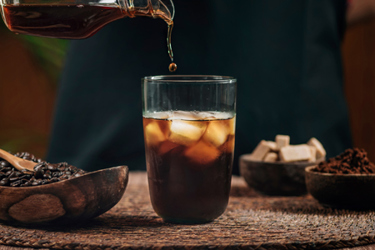Three Stage Filtration Train Delivers Shelf-Stable Cold Brew Coffee

Cold brew coffee is one of the beverage industry’s fastest-growing consumer trends. While hot brew coffee has a low risk for microbial contamination given the near boiling temperature and shorter production time, cold brew is more susceptible to bacteria growth including deadly Clostridium botulinum. Sealed and canned cold brew can be host for spore growth which is further amplified by the drink’s low acidity.
In recent years, regulatory agencies like the Food and Drug Administration (FDA) are setting stricter standards for low-acid food as a preventative measure. Guidance from the FDA is now recommending that firms subject to the pathogen reduction provisions of the juice HACCP regulation incorporate validated control measures for all C. botulinum spores into their HACCP plans.
With increasing demand, broadening distribution, and news of recent industry recalls, a cold brew producer in the Midwest needed to implement a new production process. The target was to reduce contamination risk while maintaining the flavor characteristics without the requirement for refrigeration, following FDA guidance for low-acid beverages. Additionally, with limited space at a facility already producing craft beer, the new equipment needed to be flexible, compact, and easy to install.
To meet requirements for product quality and economics, Pall Food & Beverage worked with the customer to develop an optimal solution. Discover how the implementation of a three-stage filtration train produced a reproducible and consistent barrier for contaminant removal at ambient temperature.
Get unlimited access to:
Enter your credentials below to log in. Not yet a member of Food Online? Subscribe today.
